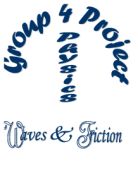HEAT TRANSFER IN SPORTS AIM: DETERMINING THE HEAT GIVEN OUT TO THE SURROUNDING WHILE PLAYING SQUASH AND TABLE TENNIS
GROUP 4 PRESENTATION
TITLE: HEAT TRANSFER IN SPORTS
AIM: DETERMINING THE HEAT GIVEN OUT TO THE SURROUNDING WHILE PLAYING SQUASH AND TABLE TENNIS
To obtain a value for energy change in indoor sports using temperature change within an enclosed area of play. The sports investigated here are squash and table tennis. The exact values for energy change would be calculated using density of air to obtain mass, specific heat capacity of air and temperature using the formulae energy = mass of air × specific heat capacity of air ×temperature change. The energy values would then be compared and appropriate conclusions could be drawn with the data obtained. The sports would be compared based on the amount of energy lost to the surrounding air in form of heat, and whichever sport produced more energy and why.
HYPOTHESIS
Heat transfer is the process by which heat is given off from a body to the surrounding. When playing a sport, heat is normally generated as a biological mechanism to keep the body cool. Therefore in this experiment we sought to determine if this heat given off could be measured in an enclosed environment in order to determine the effectiveness of the structure in relation to the sport. We took two sports that can be played in an enclosed surrounding: squash and table-tennis.







